So as I mentioned last week, I’ve been reading Chris Murray’s book THE BRITISH SUPERHERO, and this naturally got me to thinking about the work of Alan Moore. I’m not sure that readers who’ve come to comics in later years can truly understand just what a bolt of lightning Moore’s arrival was, and how it completely altered the landscape of mainstream comics, both in good and bad ways. But the work itself was always a cut above, and I can go back to it even now and find new things to appreciate in it. All of which, of course, leads the conversation to WATCHMEN.
Before it was a well-regarded HBO series and a poorly-regarded feature film, WATCHMEN was a singular work of twelve self-contained issues that told a complete story of a world much like our own whose history and trajectory was altered by the real-world advent of costumed heroes. It was THE book to be reading during that year between 1986 and 1987, and while it’s been consumed typically in a single sitting by most who have come to it in the many years since it first arrived, I hold that to get the maximum out of the experience, you need those thirty-day gaps (and longer when it came to the final issues) between installments to conjecture and speculate about the trajectory of the story and what all of the myriad of details really meant. True to its title, WATCHMEN is a Swiss watch of a construction, the perfect union and synthesis of Moore’s talents with those of Dave Gibbons. It set a benchmark, THE benchmark, for quality in mainstream comics. But since then, has there been another singular work of its type that can rival it? I’m not sure there has been.
Part of that is simply due to the fact that WATCHMEN was conceived from the start as a work with a definitive scope and length to it, whereas much of what we do in the field is long-form serialized storytelling. There have been some very good runs of very good books. But while something like SANDMAN may have many unique and worthwhile qualities to offer, it was also an outgrowth of the “eternal-monthly” mindset of publishing. SANDMAN has an ending, and it’s definitive, but it’s a seventy-plus issue journey. Far greater than a single volume.
Now maybe this is an arbitrary condition I’m putting on things. But let’s play it out and see where it leads us. Is there another work of limited duration that can compete qualitatively with WATCHMEN when it comes to mainstream comics? I’m not really looking for solutions such as MAUS, which fits the first paradigm but fails the second—it’s not what we would consider a mainstream project. So what am I overlooking here?
And if there isn’t a successor to WATCHMEN after 35 years, is it worth possibly asking why? Certainly, it doesn’t seem as though anybody has been complaining about this lack, the industry has clicked along just fine since then. Also, projects where that perfect zeitgeist of just the right talent with just the right story at just the right moment are by definition hard to come by. But on some level, this troubles me. I don’t want to think that the genre peaked in the 1980s, that everything that‘s been done since then has been, at best, an also-ran.
Should there be another WATCHMEN? (Not in terms of more stories featuring those characters or set in that world, but more projects like it that are of a defined single-volume duration and something unique and specific to say about the genre, the medium, the field or whatever.) And if so, how do we go about getting there?
All right, question time! Matt of the singular name had this to start us off:
What is the role of comics people in the Marvel movies since the Creative Committee was disbanded?
We don’t really have any direct role in the Marvel Studios films and streaming projects. We do maintain an open dialogue with the folks involved, and do regular meetings where everybody shares what they’re working on in a sort of extended show-and-tell session. But nobody on the publishing side is particularly giving any comments on scripts or production choices and whatnot. I do occasionally get called on to help answer questions of need, like some project somewhere that is looking for, say, a New York-based street gang that’s been established somewhere in Marvel continuity. And once in a while somebody may be interested in seeing scripts and artwork for something we have coming up—most recently, it was the current Chip Zdarsky-led DAREDEVIL relaunch that folks were interested in. And given the recent San Diego announcements, it’s easy to see why. (And, really, it was pretty easy to reason out why even before that announcement.)
Nacho Teso asks:
Can we expect more What If projects supervised by Chip Zdarsky as it was announced back in the day? I got excited for that, as it seemed to open a revival of the line. But after Spider's Shadow we only got the Miles issues, which seem to be more classic and not a part of the rebranded line.
Second: after reading your thoughts on prequel stories (and your current views about how to use continuity and bend it), I wanna ask your opinion about total reboots. When it is appropriate to do one? When do you feel it's okay to reboot?
There are more projects that are coming in the Chip Zdarsky WHAT IF line, though none of them are being worked on by Chip himself. On the other hand, Chip is working on at least one project for me that will be positioned outside of typical Marvel continuity, though it won’t specifically be a WHAT IF. And we’ll continue to do the occasional more traditional WHAT IF project like that Miles Morales one as is warranted as well.
On the subject ot total reboots, I tend to not like them as a rule. The exception being if a significant amount of time has passed between whenever the last time whatever is being rebooted was a going concern and when the reboot is happening. But honestly, I find reboots of the sort that DC has made something of a stock-in-trade over the past decade to be sloppy, and ineffective. And you can kind of see the result over there at the moment. While there are some very good books in their line (NIGHTWING, for example) there also seems to be a real lack of consistency. They seem to be publishing different books set in different continuities simultaneously, without any real way for a reader to begin to piece together what goes were and what matters to what. Now, on the one hand, that does create a certain amount of editorial freedom to do some cool stories. On the other hand, it also tends to generate an awful lot of, “redoing that classic story that you love, but not as well and not with any particular ingenuity.”
I don’t want to make this seem like just a knock at DC. You can certainty point to the Ultimate Universe as a period when Marvel had two simultaneous continuities going on—though I’d suggest that it was a lot simpler to work out what belonged to what in terms of the trade dress and even the titles of the books. But when you speak about reboots in comics, you’re mainly talking about either DC or Marvel or both. (I suppose Valiant has now rebooted a few times, but I feel like they’ve been getting almost “half-life”-like diminishing returns each time they do so.) Most rebooting is simply a marketing ploy anyway, a way in which to help cut through all of the white noise of books being released into the marketplace and grab some attention by providing a clean starting point for people. But I don’t actually think it’s a good or smart storytelling tool in general, and I’m very happy that Marvel’s continuity continues to roll on without the need for any wholesale reboots—the occasional small nip-and-tuck notwithstanding.
On the other hand, for all that I’m super happy as a fan that they did so, it was crazy for the DOCTOR WHO relaunch of 2005 to maintain continuity with its predecessor show—a show that had been out of production since 1989. Admittedly, for the first season, the touch-points between the two were absolutely minimal. But thereafter, they continued to become more and more pronounced and obvious until every viewer understood that it was all part of the same tapestry. In some ways, the fact that they pulled it off is a cause for some celebration. But really, at that moment, starting from scratch would have been a wiser decision (if not as satisfying to me personally.)
And finally, regular correspondent Evan “Cool Guy” had this to say:
You said the following:
"I firmly believe that current me and the me of, say, three decades ago would hate one another and the manner in which we approached the job."
Can you expand on that?
It’s pretty simple. The me of the 1990s, in part because of the ethos of the era in which I joined the organization and in part because of my own proclivities as a reader and a fan was much more concerned with things like the minutia of a seamless continuity of the Marvel Universe than the me of the present is. I came up during the era of Mark Gruenwald, where an inordinate amount of energy was expended to try to keep all sorts of not-incredibly-important things about the Marvel Universe straight. Energy and effort that didn’t result in better stories. Over the years, in part because the leadership changed and so the priorities changed, I came to understand a bit more about what the important parts of the mythos, the canon are, and which ones are arbitrary. Today, I tell our younger editors that “The continuity exists to serve the stories. The stories do not exist to serve the continuity.” At one point, that seemed to not be true, but that point is long in the past. So young me would be frustrated by older me not being all that concerned about picking up a particular villain from where he had last been seen in his previous story, or in being able to have Iron Man in his own series and AVENGERS simultaneously without needing an editorial note to state the obvious: one must take place before the other. And I’m sure present day me would be frustrated by how limited young me was in his thinking about continuity and storytelling and his inability to consistently prioritize the things that are important. So much of that concern for continuity comes down to wanting to feel justified in the time you spent reading those stories, but that justification is no reason to do new stories—those stories need to stand on their own as entertainment for an audience of right now, not exclusively an audience of “True Believers” who have read every appearance of the Owl dating back to 1964.
Behind the Curtain
And speaking of the younger me, here’s an artifact from those bygone days that shows exactly where I was situated.
In 1992, the Marvel offices were renovated. This required the entire editorial staff to relocate for several months from the usual 10th Floor digs down to makeshift offices on the 4th floor while the work was being done. But it was necessary, as the size of the staff had outgrown the space that we had available to us. When the renovations were finished and we moved back in, Rick Parker was commissioned to do the map you see above for the pages of MARVEL AGE, our in-house produced fan magazine. This was the latest in a tradition of such maps of the office space dating back to the 1970s, when Marie Severin had produced one for. Parker was a talented caricaturist, and he captured the essence of many of my Marvel co-workers in this image. As you can see (but probably can’t make out) after the move myself and assistant editor Mindy Newell inhabited a windowless interior office on the left side of the building. Several years later, I would relocate to the office occupied here by Danny Fingeroth and Mike Lackey, before shifting again about 18 months later into the office containing Rob Tokar and Dan Cuddy here.
For those who care enough to read the fine print, this map came with an extensive key, reproduced above. See if you can locate future DC Comics Editor in Chief Marie Javins among the madness!.
Pimp My Wednesday
There’s no rest for the weary, so after a relatively small ship week last time, this week sees us dumping a bunch of wonderment upon your local comic shop’s doorstep. So here’s what you can expect to find this Wednesday:
This issue of IRON MAN unfortunately does something that I’ve hated since I was just a reader: it blows the final image of the issue on the cover. So yes, this particular outing will end with Tony Stark donning a new version of his stealth armor in order to deal with the matters at hand. Ordinarily, upon learning this (the cover was produced well before the script had been written) I might have tried to shuffle some covers around. But it’s not easy to get a replacement cover from Alex Ross in jig time, and there wasn’t really any other place to put this piece. And it is a lovely image. See, this is exactly the sort of decision on my part that younger me would have hated and been very vocal about. Outside of that, it’s another great episode by writer Christopher Cantwell and artist Angel Unzueta.
Delayed from last week due to the vagaries of print and delivery, the second issue of MECH STRIKE MONSTER HUNTERS, edited by my assistant editor Martin Biro, hits the stands. It’s a big, crazy, fun adventure comic, one that maintains the spirit of the regular AVENGERS series, but one that also, thanks to its subject matter, may be a little bit more appropriate for younger readers looking for a thrill. It’s got monsters and robots and armor and cool stuff, and it’s the work of Christos Gage and Paco Diaz.
Back in the 1980s, when his series had just started, my small crew of comics-reading friends tended to refer to Moon Knight as “Moon Guy”. Or occasionally, “Moon Goon”. This particular installment of Jed MacKay and Alessandro Cappuccio’s series leans heavily on re-establishing the lead character’s alters. There are a couple of answers to questions that fans have been asking since the series began, and a couple new questions postulated. There’s also a pretty cool battle with a pair of new villains, the Nemean and Grand Mal, who’ve been lurking around the background of the past issue or two. While we are building a longer serialized story, we have been working very hard to keep the focus on MOON KNIGHT to primarily single issue and two-part stories, so that there’s always an easy place for a new reader (like yourself, maybe) to hop on, and so that there’s a constant feeling of payoff and not simply interminable set-ups for stuff down the line. So far, it seems to be working out pretty well.
Also from Martin Biro comes the third issue of the NEW FANTASTIC FOUR limited series, written by Peter David and illustrated by Alan Robinson. It’s a crazy action-fest in Las Vegas with a supernatural threat and a heaping helping of Peter’s particular brand of humor and adventure.
And in the world of digital, David Pepose’s first serialized AVENGERS story “The Black Ledger” wraps up this week in MARVEL UNLIMITED. You know, for several years, David worked as a comic book reviewer, and he first came to my attention because his reviews were often very harsh. He was a difficult grader, he didn’t give out praise easily, and he was consistent enough in this that I took notice of his name—something I rarely do with reviewers, to be honest. But this frustrated me often enough that I did in this case. So when he actively started to break into the business as a writer, it took me a while to reach out and hire him for anything. To my way of thinking, having been so savage to so many other creative efforts, he needed to show that he could produce work as good or better before I’d give him the time of day. As I told him when we first started talking, in his case “good enough wasn’t good enough.” But he’s really risen to the occasion, and I feel like he’s got a bright future ahead of him. This final installment brings this opening storyline to a conclusion; next week, a new creative team will take over with a completely different Avengers story to tell. I should also mention that, like most of the preceding chapters, this sixth one was adeptly illustrated by Farid Karami.
A Comic Book On Sale 20 Years Ago Today, July 31, 2002
CATWOMAN: SELINA’S BIG SCORE was a transformative story for the character, one that set her upon a new direction after at least a decade of stories that treated her as either a super villain or a quasi-super hero and always emphasized her femininity in exaggerated ways—she was a quintessential “bad girl” during that period. It was both written and illustrated by the late Darwyn Cooke, one of the finest practitioners of the medium. Cooke had previously worked in animation, on series such as BATMAN BEYOND, but he was always drawn to the medium of comics. Many years earlier, he had been one of the creators who had a story published in DC’s NEW TALENT SHOWCASE, but that short assignment didn’t lead to future work. His approach was still too stripped-down, too Alex Toth-influenced as compared to what people were looking for in super hero comics at the time. But the influence of BATMAN: THE ANIMATED SERIES helped to change that, at least at DC, and eventually Cooke began to make inroads with the publisher. SELINA’S BIG SCORE is only nominally a super hero comic at all. Rather, it’s a crime caper story that happens to take place within Gotham City and use a number of established figures from Batman lore: Carmine Falcone, Slam Bradley, etc. Cooke threw out everything about Catwoman prior to that point, returning her to her roots as a thief with an altruistic streak. Cooke was influenced by noir, so his Catwoman had more than a little bit of femme fatale spice to her. But she was in no way the blow-up sex doll that she’d been depicted as in recent years. Rather, she was a methodical planner, pulling off an elaborate heist through shrewdness and planning. This became the template for the later CATWOMAN series launched by Cooke and writer Ed Brubaker, who expanded on what Cooke had done and who brought his own noir-inspired sensibilities to the mix. Like much of Cooke’s body of work, it’s also relatively timeless, set in a Gotham City that’s at once a throwback to the time of art deco yet also modern at the same time. It’s remained steadily in print since its first publication. While it may not be the absolute pinnacle of the work Cooke did for DC—that is arguably his NEW FRONTIER series—it commands a high place in the standings for the impact it had on the character long term.
A Comic I Worked On That Came Out On This Date
This was the last issue of the original run of NEW WARRIORS, #75, which dropped on July 31, 1996. NEW WARRIORS was a series that succeeded despite itself. I can recall that, when I was an intern, one of the offices in which I worked has the spread of the characters posted on a dart board. When introduced by Tom DeFalco and Ron Frenz, they were seen as goofy and of another era. Nobody expected very much from them. But the combination of a young and passionate writer in Fabian Nicieza and the developing but very classic lines of Mark Bagley (balanced by the traditional Marvel sensibilities of editor Danny Fingeroth) turned it into a hit, and one of the best Marvel titles of the period, at least for its first couple of years. Eventually, though, Bagley left to draw AMAZING SPIDER-MAN regularly, the title changed editorial hands, and a proposed line expansion that saw NIGHT THRASHER and NOVA get their own series, with a second NEW WARRIORS book lanned, turned out to be optimistic. The market began to contract, and suddenly there wasn’t enough air for additional NEW WARRIORS projects. Frustrated by a lack of support from Marvel, Fabian decided to leave the series with issue #53. And that’s just about where I come in.
I was handed editorial command of the NEW WARRIORS titles as part of the MARVELUTION reorganization that saw the Editor in Chief job divided into five independent franchises. Due to their connection with Fingeroth and the fact that the series focused on younger heroes, NEW WARRIORS ended up as part of the Spider-Man family of books—despite the fact that it had no overt connection to the wall-crawler. And so it was simple to give the three titles over to me, as the other folks within the unit would be concentrating more heavily on Spidey matters. This was to my liking, as I had really enjoyed NEW WARRIORS—though my momentary elation evaporated somewhat when I realized that Fabian was departing. (I put out his final issue, #53). Still being young and new to the ways of editing comics (I had mostly been focused on trading cards and other special projects in the prior years) I wound up doing an open call for NEW WARRIORS pitches. I got a bunch of them, most of which were not very good. (One of those pitches was from Warren Ellis, whose write-up included formative versions of some of the ideas that he’d later use in other series, such as a prototypic Jenny Sparks. It would have been a very different book had Warren taken it over at this point, but I do wonder if his presence would have been enough to keep it going.) In the end, the best pitch by far was from Evan Skolnick, who had been Fabian’s assistant editor. But this presented me with a problem. Evan was a friend of mine, going back to by internship days. I’d always hated the sort of nepotistic approach that saw Marvel editors hiring other Marvel editors to write their books, rather than talent from outside, so I was very self-conscious about putting Evan in the chair. At the end of the day, though, after a conversation with my boss Bob Budiansky about this subject, I bit the bullet and went ahead. One of the things that drew me to Evan’s pitch was that he wasn’t trying to reinvent the wheel. Most of the other folks who had pitched for NEW WARRIORS seemed as though they’d never read it, and attempted to turn it into something else. But Evan, it seemed, just wanted to do NEW WARRIORS.
I also got twice lucky in that, when I came aboard, NEW WARRIORS had just onboarded a new regular artist who I didn’t feel was a good match for the material. He also had strong ideas about the direction of the series—he and Fabian had been simpatico—and he wasn’t in synch with Evan at all, which led to some difficulties on that first issue, #54. It’s not all that it could have been, especially for a new creative team launch, as people were pulling in different directions. Needing a fill-in art job almost immediately to get the woefully-behind-schedule series back on track, I hired Patrick (today Patch) Zircher off of some GREEN HORNET samples he had sent to Marvel’s slush pile. Zircher was good and he was hungry, and so when the other artist decided it was best that he move on to other assignments (which kept me from having to have a very awkward conversation with him) Zircher was able to step into the breech directly. He wound up doing the entirety of the rest of the run, including two oversized issues along the way.
Bad luck and inexperience on my part caused some difficulties early on, but especially with the inclusion of the series as part of the running Spider-Man plotlines, we were able to keep it healthy and running. That involvement wasn’t to the liking of most Spider-Man fans (and personally, I didn’t really love it all the time either. For example, there was one point at which I was told to bring in Kaine, the villainous clone of Peter Parker, as a sort of Cable mentor-figure for the group.) But it was a necessary step if the series was going to make it. Ultimately, though, after MARVELUTION came MARVELCUTION a year later, in which the five editor in chief system was discarded and 40% of the staff (including my boss Bob Budiansky) were laid off. In the aftermath, newly-minted EIC Bob Harras pruned back the line to a level that could be dealt with by the reduced staff, and he chose to cancel NEW WARRIORS. The book was still profitable, but he had no particular connection to it or love for it, and so it was easier for him to just shut it down and move on. It was a bitter pill, but the company had bigger problems, and so I moved on. Bob did louse me up on NEW WARRIORS one more time a few years later. Kurt Busiek and George Perez and I had included Justice and Firestar in our AVENGERS line-up during the HEROES RETURN launch as a pair of fresh young eyes who could observe the Avengers anew. They were only intended to stick around through issue #25, at which point my plan was to spin them off into a new NEW WARRIORS relaunch using their connection to the very successful AVENGERS to give it a good launching platform. I would have treated it like another sister title, in the way THUNDERBOLTS was at that time. But shortly before this could happen, Bob greenlit editor Frank Pittarese to produce his own NEW WARRIORS project—and that scuttled my plans. Still, as one of the first titles I got to oversee, and as a book that I loved simply as a reader, I still have a soft spot for NEW WARRIORS.
Monofocus
Took out some time last weekend to sit down and watch LIGHTYEAR, the strange new sequel/follow up to TOY STORY. And it was better than it had any right to be. I still sort of question the need to tell this story, apart from a desire to find additional ways to trade upon the popularity of the TOY STORY films. But while it was a little bit by-the-numbers., LIGHTYEAR had a good aesthetic sense to it and a straightforward story. And while it was sometimes just a hair too “SANTA CLAUS IS COMING TO TOWN” in showcasing where all of the established features of the action figure version came from, it was nonetheless entertaining. Chris Evans in particular was good in the role, to the point where after only a few minutes I stopped expecting Tim Allen’s voice.
I also started PAPER GIRLS, but have only sampled the first episode. And I’m not entirely sold on it yet, though hopefully that will happen over the course of the next episode or two. Part of my problem is that the first episode makes a creative choice that I warn our younger editors away from: it opens with a time jump to the near future, thus telegraphing the big twist at the end of the episode. I think it’s a stronger episode all around if you cut that pre-title sequence and simply started with the characters in 1988. But that’s what makes horse races. The cast is all good, though there is a strange feeling of there being not enough urgency on their parts given the sequence of events that happens to them in the back half of the episode. Some of that comes down to the difference between comics and film, where real people need to traverse real space and dialogue takes time. I don’t know. I dropped off of Y THE LAST MAN after I think three episodes, so hopefully this other Brian K Vaughan-based series will work better for me. If it does, you’ll no doubt hear about it in the weeks to come.
I also made time to watch the documentary MILESTONE GENERATIONS on HBO Max about the founding of that recently-returned comic book imprint. It was interesting to watch, in that I was an uninvolved party during the time when the idea that would become Milestone was being developed. When Denys Cowan talks about taking secret meetings with Dwayne McDuffie so that nobody else would know what they were working on, I would have been one of the people that they were keeping in the dark, as Dwayne and Denys were working on DEATHLOK in my office. I remember liking a lot of the Milestone titles, an opinion that was reiterated recently when I revisited a bunch of them in the recent MILESTONE COMPENDIUM. They ran a very forward-looking operation and made some great content, and it’s a shame that the marketplace both contracted and also wasn’t more welcoming to them at that time, and the company ran its course. Today, the characters have been brought back, though I don’t think the end product is yet quite as strong as it had been the first time out. It suffers a little bit from what I spoke about earlier concerning reboots.
I also sat through a recent independent Japanese film on Amazon Prime, BEYOND THE INFINITE TWO MINUTES. (The original Japanese title translates approximately to the less-graspable WE AT THE END OF THE DROSTE.) It’s a fun little time travel film that is shot in such a way as to make the entire film feel like a single continuous shot. It concerns a cafe owner who discovers that the television in his upstairs apartment is connected to the one downstairs in the cafe—but that signal takes two minutes to transmit, so he’s effectively got a window into the future and a way of interacting with it. From there, the story goes to some fun time travel places and winds up involving some stolen money, a pair of time cops, and an unlikely love story. I don’t know that it breaks any ground per se, but it’s interesting for just the technical challenges alone, and the production team was very clever in how they managed to make everything appear seamless (in particular sequences where characters speak with other versions of themselves then loop around to inhabit the other side of that same conversation.) It’s a fun magic trick, and at just a bit of an hour’s run time, it’s an easy watch. I enjoyed it.
Finally, this past week I’ve found myself playing a bit of GUNDAM BREAKER MOBILE on my iPad. As I’m of the generation that believes that MOBILE SUIT GUNDAM stories should be science fiction adventures concerning the futility of war and not tales of teenagers building plastic models and having them fight one another, I really shouldn’t like it in principle. But I have to admit, it’s fun to build and customize your own Mobile Suit and then send it into combat. In particular, the Arena feature where you can duel directly against other players is a whiz, as your opponent isn’t locked into the actions of an AI, so the experience is more unique. This is likely a pacing fancy and I’ll soon get bored with it, but I find that at the moment I’ve been spending twenty minutes or so while waiting for dinner messing around with it, and I expect that I’ll continue to do so for some time. The App is available in all of the usual App Stores for anybody who’s curious.
Sorry for the late release time this week, folks. I had actual in person life stuff to attend to yesterday, which means that I didn’t get this all finished up until Sunday afternoon. (It’s about 2:30 now.) I’ll try to keep it from becoming a pattern, but there’s not guarantee that it won’t happen again. Anyway, enjoy your week, and I’ll be back in give-or-take a week with more nonsense.
Tom B

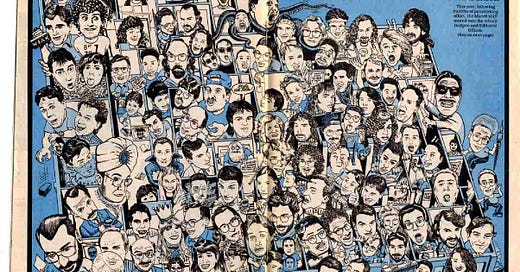



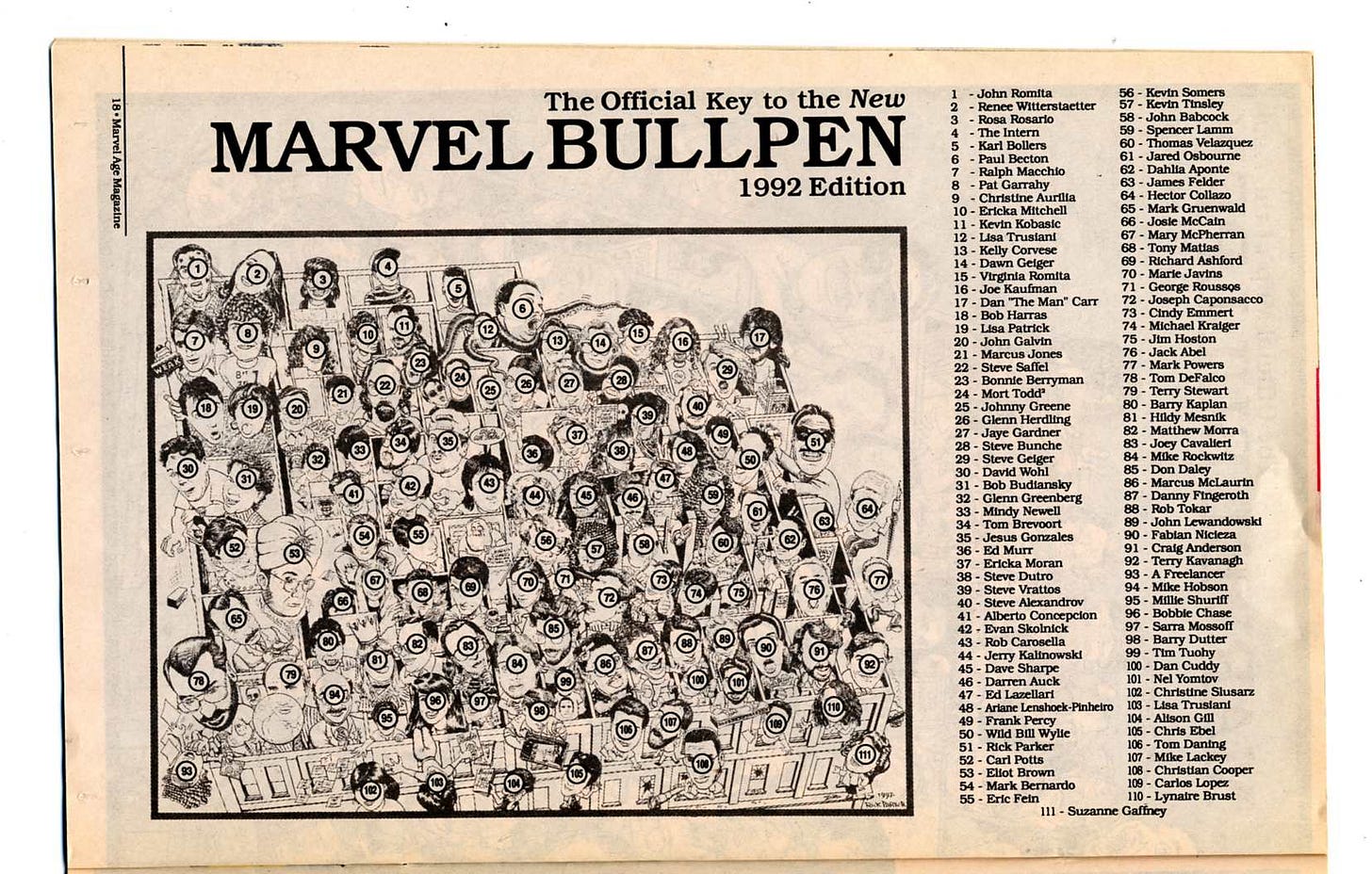
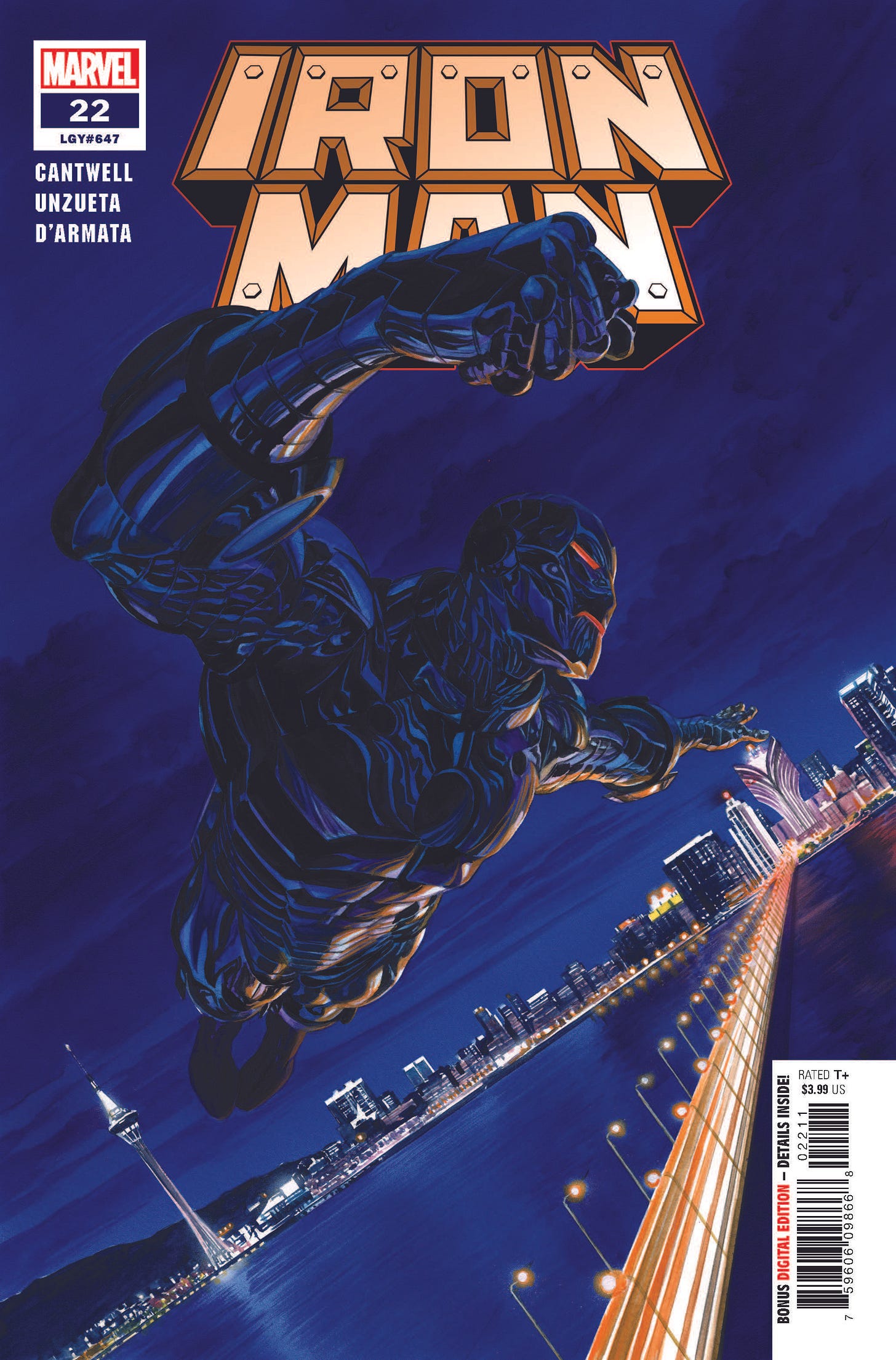
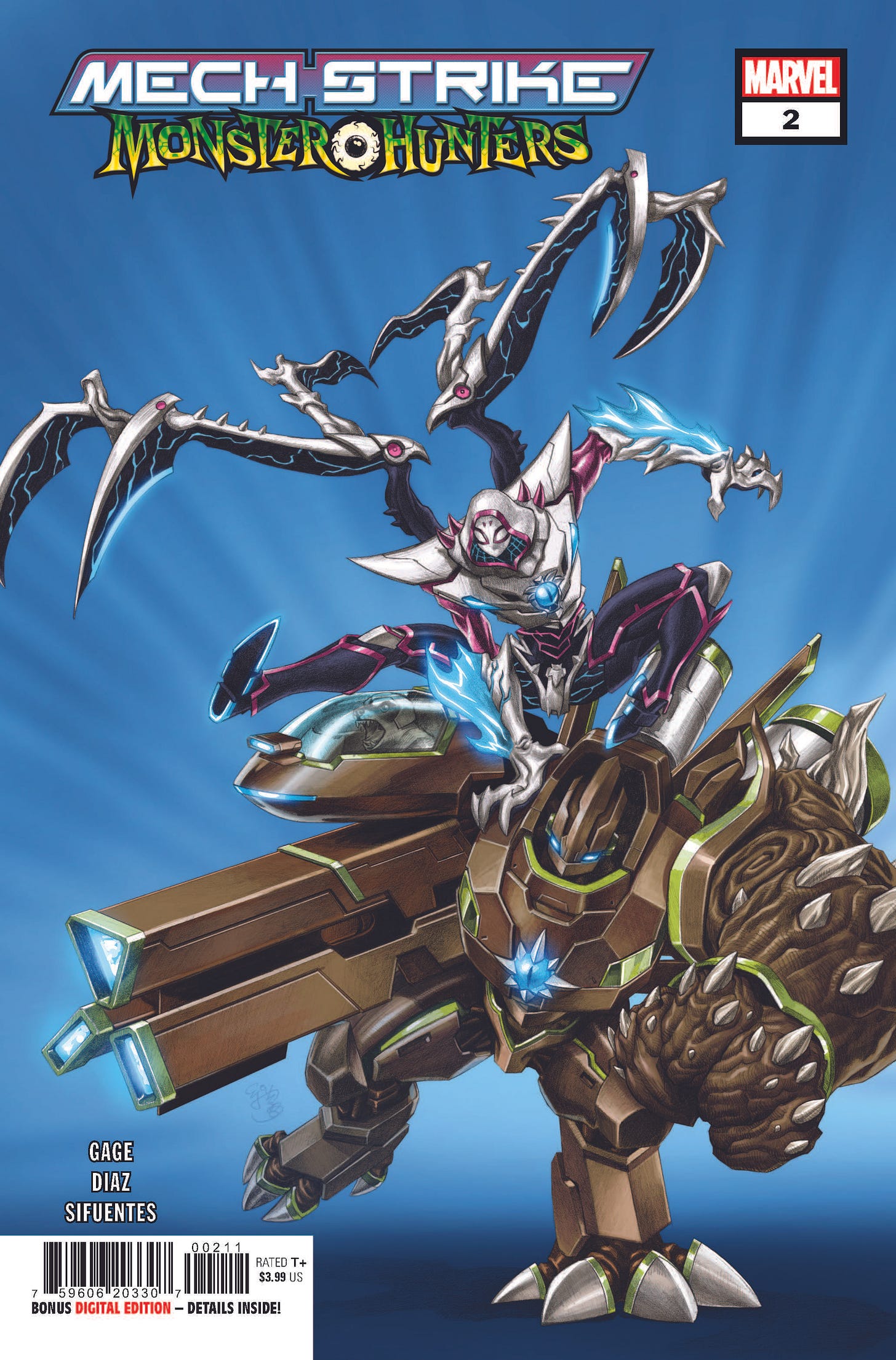
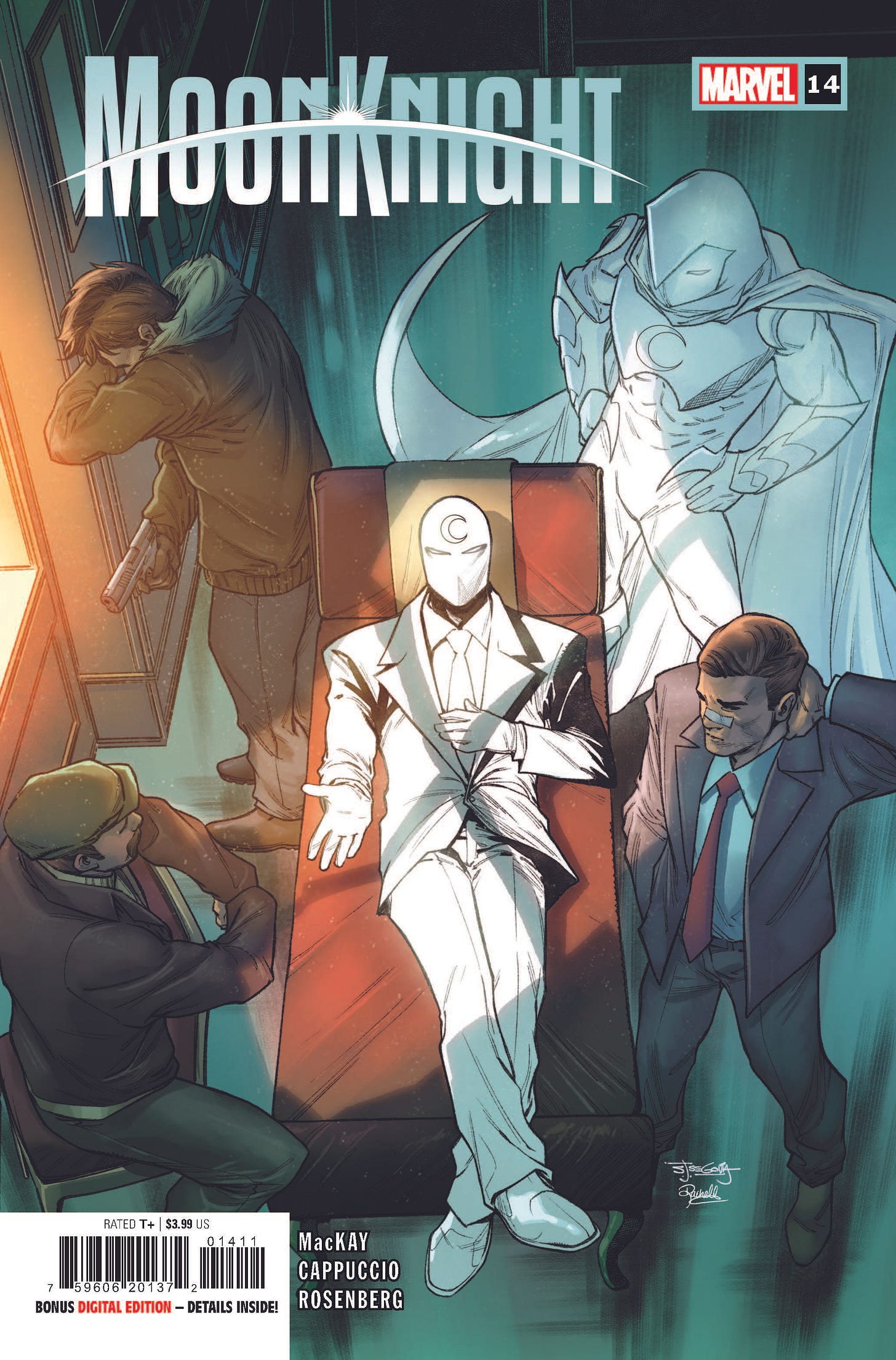
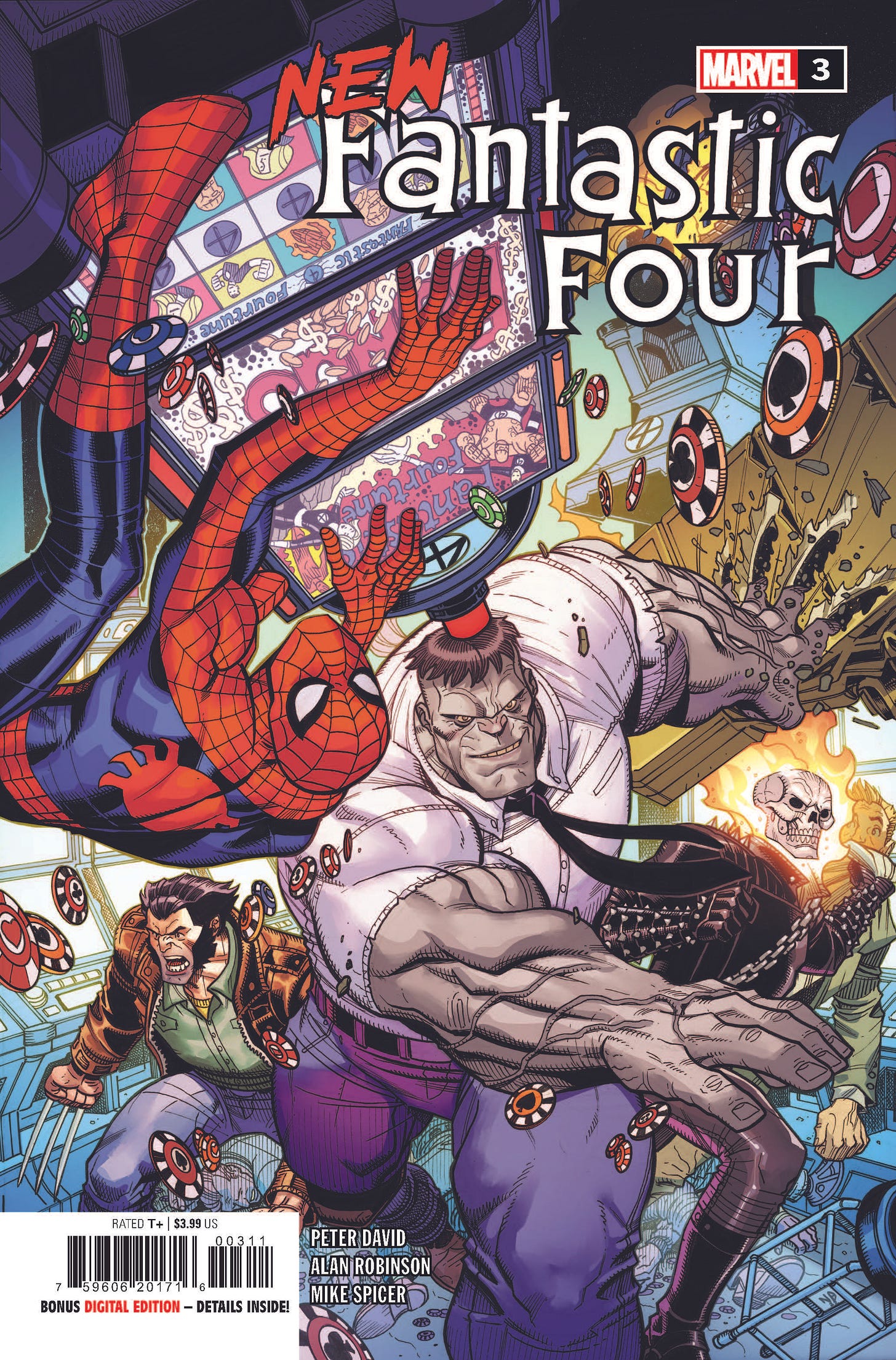

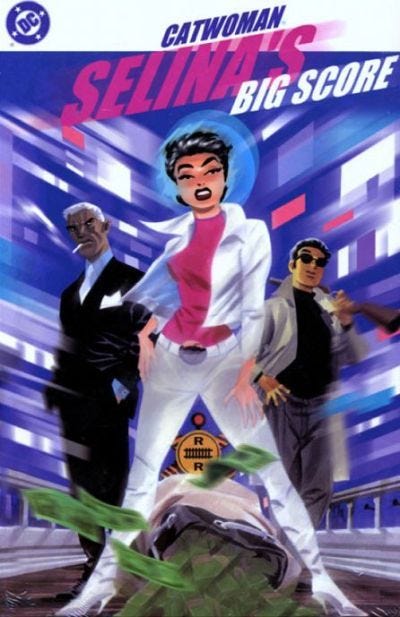

Hey Tom!
I loved hearing that there was a panel celebrating the life and career of Mark Gruenwald at SDCC this year and wished I could've been there to have seen it. You mentioned today you "came up during the era of Mark Gruenwald" and I know he's got a special place in your heart, career, life -- so i was hoping, for those of us never fortunate enough to meet or work with the guy, to prompt a Mark story or two out of you. What he was like as an editor, mentor, creative thinker, marvel fan (or, my personal favorite flavor of Mark stories, a prank-puller supreme)? i think about how if david and I always wanted our HAWKEYE to be a love letter and thank you to his work and we were only ever fans, then the people that knew and loved him must share that feeling we have for him a thousand times over.
mmmwah,
fraction
A lot of Chip Zdarsky Content™ in this week's newsletter, so I'm giving it ★★★★